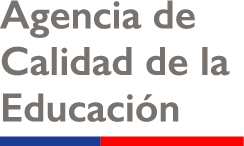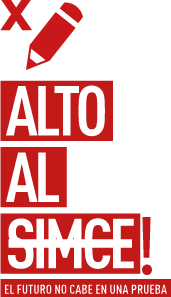chile
The SIMCE test is a key component of a profound market-oriented reform adopted in the 1980s.
SIMCE results are used to inform school choice and teachers’ promotion decisions.
During the 2000s, policy-makers started using SIMCE to try to address market failures in education.
TEST-BASED ACCOUNTABILITY WORLD ATLAS
SAWA IN CHILE
| COUNTRY CHILE | ||
|---|---|---|
| Name of the standardized tests (in primary and low secondary) | Sistema de Medición de Calidad de la Educación (SIMCE) | |
| Name of the agency in charge of administering the test | Agencia de Calidad de la Educación (Quality Assurance Agency) | |
| Grade(s) in which the test is applied | 4º básico (Grade 4, ISCE 1), 6º básico (Grade 6, ISCED 1), 8º básico (Grade 8, ISCED, 2), 2º medio (Grade 10, ISCED 3) | |
| Areas of knowledge covered by the test | Reading, Mathematics. Others (areas not tested in all grades): English, History, Geography and Social Sciences, Personal and social development, participation and citizenship, Academic self-esteem and motivation, School engagement, School climate, Healthy habits. | |
| Year of adoption | 1988 | |
description
The SIMCE test (1988-ongoing) results from the evolution of the PER test (Programa de Evaluación del Rendimiento escolar, 1982-1984) and the SECE test (Sistema de Evaluación de la Calidad de la Educación, 1985-1986). All of these standardized tests were adopted in the context of Pinochet’s Dictatorship (1973-1990), and as part of a profound market-oriented reforms that aimed at promoting school choice and school competition. In 1995, the SIMCE results were published in the press for the first time as a way to inform families' school choices. One year later, in 1996, SIMCE became part of a teacher’s evaluation system that attaches collective salary bonuses to schools’ performance.
Nevertheless, at the start of the 2000s, policy-makers became increasingly aware of the multiple failures and side-effects of market dynamics in education, especially in terms of school segregation and education inequalities. In this context, the Ministry of Education started using SIMCE not only to inform families' choice and teachers' promotion, but also as to attempt addressing educational inequalities and give support to – and in some cases intervene - low-performing schools.
SPECIFIC ACCOUNTABILITY POLICIES
AND TOOLS ATTACHED TO THE FEDERAL
AND STATE TESTS (MINAS GERAIS):
INDEX OF SCHOOL AUTONOMY
(OECD, PISA 2015 Database)
CHILE
OECD average
Source: (OECD, 2015)
PEDAGOGICAL AND MANAGERIAL
SCHOOL AUTONOMY
Managerial autonomy (financial), School autonomy over resource allocation, % of responses
“only principals and teachers” (OECD, PISA 2015, Database)
| Selecting teachers for hire | Firing teachers | Establishing teachers’ starting salaries | Determining teachers’salaries increases | Formulating the school budget | Deciding on budget allocations within the school | |
|---|---|---|---|---|---|---|
| Chile (principals) OCED average |
66,8 70,3 |
57,2 57,4 |
22,3 |
22,3 23,4 |
51,5 56,3 |
60,3 75,9 |
| Chile (teachers) OCED average |
4,9 9,8 |
1 1,3 |
0,1 0,7 |
0,1 1,4 |
3,6 6,3 |
9,9 14,8 |
Source: (OECD, 2015)
PEDAGOGICAL AUTONOMY OVER
CURRICULA AND ASSESSMENTS
% of students in schools whose principals responded that only “principals and/or teachers” are responsible of the following tasks (OECD, PISA 2015 Database).
| Establishing student assessment policies | Choosing which textbooks are used | Determining course content | Deciding which courses are offered | |
|---|---|---|---|---|
| Chile (principals) OCED average |
65,9 61,4 |
26,4 31,9 |
26,9 27,1 |
64,5 63,9 |
| Chile (teachers) OCED average |
64,3 66 |
77,1 81,8 |
52,6 67,8 |
21,7 |
Source: (OECD, 2015)
legislation

General Education Law (Ley General de Educación)

Law of the Quality Asssurance System of Education (Ley del Sistema de Aseguramiento de la Calidad de la Educación Parvularia, Básica y Media y su Fiscalización)

Preferential School Subsidy Law (Ley de Subvención Escolar Preferencial)

SNED Law
references

Bellei, C., & Vanni, X. (2015)
Chile: The Evolution of Educational Policy, 1980-2014.
Education in South America: Education Around the World, 179-200.

Bravo, J. (2011)
SIMCE: pasado, presente y futuro del sistema nacional de evaluación.
Estudios públicos, 123(189-211).

Carrasco, A., Gutiérrez, G., & Flores, C. (2017)
Failed regulations and school composition: selective admission practices in Chilean primary schools.
Journal of Education Policy, 32(5), 642-672.

Falabella, A. (2015)
El mercado escolar en Chile y el surgimiento de la Nueva Gestión Pública: El tejido de la política entre la dictadura neoliberal y los gobiernos de la centroizquierda (1979 a 2009).
Educação & Sociedade, 36(132).

Mizala, A., & Romaguera, P. (2003)
El sistema nacional de evaluación del desempeño docente (SNED) en Chile.
Inter-American Development Bank.

Parcerisa, L., & Falabella, A. (2017).
La consolidación del Estado evaluador a través de políticas de rendición de cuentas: Trayectoria, producción y tensiones en el sistema educativo chileno.
Education Policy Analysis Archives, 25(89), 1-27.
our research team in chile

Alejandra
Falabella
PARTNER
How to cite:
Parcerisa, L. (2018). SAWA World Atlas: Chile, Reforming Schools Globally: A Multi-Scalar Analysis of Autonomy and Accountability Policies in the Education Sector (REFORMED).
Retrieved from: http://www.reformedproject.eu/



